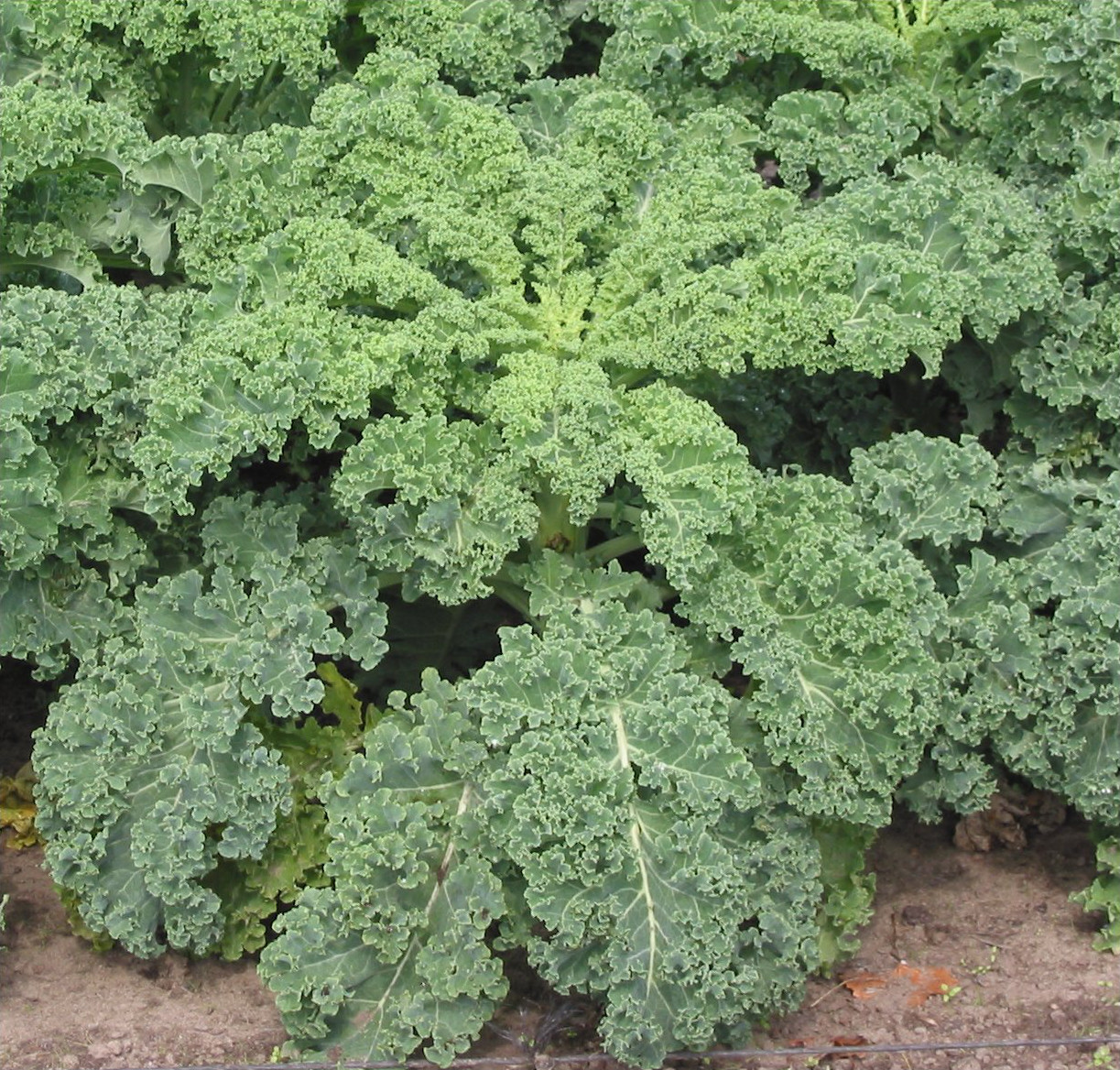Kale isn’t just a trendy superfood—it’s a symbol of hardiness and vitality. With its ruffled, deep green or purple leaves and impressive cold tolerance, kale brings both nutritional value and visual texture to the garden. Whether you’re growing it for soups, salads, or smoothies, kale is a powerhouse crop that keeps on giving.
Beyond its health perks, kale provides gardeners with an easy-to-grow, long-lasting harvest that thrives through seasons where many vegetables falter. It’s a plant for both the practical gardener and the health-conscious cook.

Portrait of the Kale
Kale belongs to the Brassicaceae family, closely related to cabbage, broccoli, and Brussels sprouts. Its broad, curly or flat leaves are rich in vitamins and minerals, and it’s cultivated as an annual or biennial, depending on the climate.
- Type: Leafy green vegetable (biennial, grown as an annual)
- Family: Brassicaceae
- Common Names: Kale, Curly Kale, Tuscan Kale, Lacinato Kale
Foliage and Form
Kale grows as a rosette of leaves, upright or spreading, depending on the cultivar. The leaves are often textured or crinkled, and they can range from bright green to deep purple.
- Height: 30–90 cm (12–36 in)
- Spread: 30–60 cm (12–24 in)
- Growth Habit: Upright, leafy rosette
Blooms and Fragrance
Though primarily grown for its leaves, kale will flower in its second year if allowed—producing small yellow blooms that are attractive to pollinators. However, most gardeners harvest before this stage.
- Bloom Time: Spring of the second year (if not harvested)
- Color: Yellow
- Fragrance: Mildly sweet, but rarely allowed to flower
The Right Time to Plant, Prune, and Enjoy Kale
| Month | Planting | Harvesting | Maintenance / Thinning |
|---|---|---|---|
| January | ❌ | ✅ In mild climates | ✅ Remove yellowing leaves |
| February | ✅ Indoor or protected sowing | ✅ Late winter crops | ✅ Mulch and check for pests |
| March | ✅ Direct sow in cool zones | ✅ | ✅ Thin seedlings |
| April | ✅ Prime sowing time | ✅ Baby leaves | ✅ Clean lower foliage |
| May | ✅ Continue sowing | ✅ Regular harvests | ✅ Maintain soil moisture |
| June | ✅ Last spring sowings | ✅ | ✅ Cut older leaves for airflow |
| July | ✅ Begin fall crop indoors | ❌ | ✅ Pest watch (aphids, cabbage worms) |
| August | ✅ Sow outdoors for fall | ❌ | ✅ Water regularly |
| September | ✅ Final sowings | ✅ Early fall harvest begins | ✅ Trim damaged leaves |
| October | ❌ | ✅ Peak fall harvest | ✅ Mulch before frost |
| November | ❌ | ✅ Sweetened by frost | ✅ Harvest often |
| December | ❌ | ✅ Mild zone crops continue | ✅ Minimal—protect from deep freezes |
✅ = Recommended ❌ = Not advised
Watering, Sunlight, and Environment for Kale
Watering
Kale needs even moisture to stay tender and avoid bitterness. Dry conditions result in tough, unpleasant leaves.
- When to Water: 1–2 times per week
- How Much: Enough to keep soil moist but not soggy
- Watch out for: Wilting or yellowing from drought or waterlogging
Sunlight
Kale is flexible—it grows well in full sun but tolerates partial shade, especially in warmer regions.
- Ideal Exposure: 4–6 hours of sun per day
- Shady Sites: Slower growth but more tender leaves
Indoor vs Outdoor
While kale can be started indoors, it’s better suited to outdoor garden beds or large containers where its roots can stretch and its leaves can fully develop.
- Best Location: Vegetable beds, raised planters, or containers
- Avoid: Indoor growth beyond early seedling stage
Temperature
Kale shines in cool temperatures. In fact, a light frost actually improves its flavor by increasing sugar content.
- Optimal Range: 10–20°C (50–68°F)
- Hardiness Zones: USDA zones 7–9 for winter harvest; annual elsewhere
- Protection Tip: Mulch well and use row covers in frost-prone areas
Ideal Soil Conditions for Growing Kale
| Soil Feature | Optimal Condition | Why It Matters |
|---|---|---|
| Soil Type | Loamy, fertile | Promotes vigorous leaf production |
| Texture | Loose and crumbly | Helps root expansion and moisture retention |
| Drainage | Well-drained | Prevents rot and fungal diseases |
| Moisture | Consistently moist | Supports tender, flavorful leaves |
| Soil pH | Neutral to slightly alkaline (6.5–7.5) | Reduces risk of clubroot disease |
| Fertility | High in compost and organic matter | Encourages healthy growth and yield |
Common Problems & Solutions
| Issue 🐾 | Symptoms 🔍 | Solutions 🛠️ |
|---|---|---|
| Aphids 🐜 | Sticky leaves, curled new growth | Spray with water or neem oil |
| Cabbage Worms 🐛 | Holes in leaves, green droppings | Use row covers, hand-pick, or apply BT |
| Yellow Leaves 🍂 | Overwatering or poor soil | Improve drainage and reduce watering |
| Leggy Growth 🌱 | Sparse, floppy stems | Provide more sunlight and space |
| Bitter Leaves 🥬 | Dry or hot conditions | Keep well-watered and harvest early |
Kale may not have fragrant flowers or delicate vines, but it offers practical beauty, toughness, and year-round nutrition. Easy to grow, easy to harvest, and brimming with benefits, kale deserves a spot in every edible garden. Whether mass-planted for production or tucked into containers for convenience, this leafy green proves that resilience and health can be deeply rooted in your backyard.